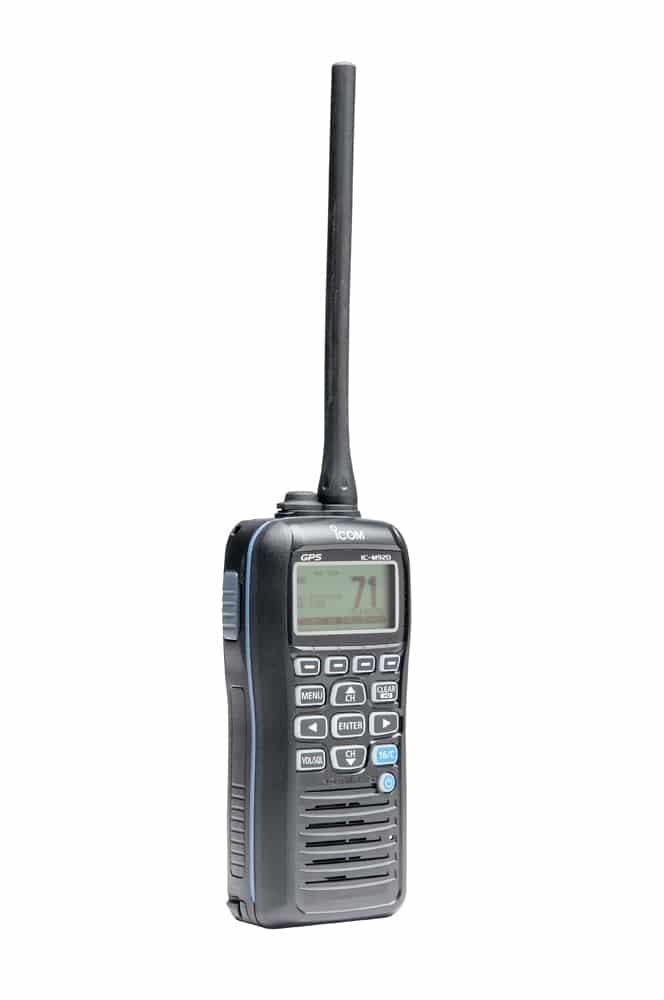
DSC Tips
Q. How do I connect my GPS to my VHF radio to make the Digital Selective Calling (DSC) distress button work?
A. To activate your radio’s DSC function, you need to connect your GPS or GPS/chart plotter to your VHF radio. This involves connecting the positive (+) and negative (-) data out wires from your GPS or chart plotter to the positive (+) and negative (-) data in wires to your VHF radio. Your manuals will provide you with a wire-color-to-wire-color reference to simplify connections. (Manuals can be downloaded from manufacturers’ websites.) You also need to apply for a Mobile Maritime Service Identification (MMSI) number that identifies your boat. This can be done for free at boatus.com or usps.org. Lastly, enter your nine-digit MMSI number into your VHF. You will find how to enter this identification number in your owner’s manual.
The Down-Low on Digital Selective Calling
When the Digital Selective Calling (DSC) button on your radio is depressed for several seconds, an emergency mayday alert is transmitted digitally. This will automatically trigger a loud audible alarm on all DSC-equipped radios on any vessel within VHF-radio range.
The alarm is sounded regardless of which channel anyone might be monitoring. A DSC alert will not only announce that an emergency-distress situation exists, but it also will give everyone your position. This is important since another pleasure or commercial boat in the area sometimes might be closer to you and able to provide rescue assistance more quickly than a U.S. Coast Guard vessel or other first responder.
Keep in mind that DSC will not work unless your GPS is on and working. Your radio will confirm this fact when it displays your present latitude and longitude on your radio’s screen.
Some sets like the Standard Horizon models GX2200 ($399) and Explorer GX1700 ($249) and Icom’s M424G ($349) and M324G ($199) VHF radios all have built-in GPS receivers. Since these sets already have their VHF and GPS internally connected, you only need to enter your Mobile Maritime Service Identification (MMSI) number to make your DSC operational.
Both companies also make handheld VHF/GPS models (Icom M92D for $399 and the Standard Horizon HX870 for $249) that are an excellent backup to your main radio and GPS, as well as serve as an emergency radio and GPS in the event you ever have to abandon the boat or suddenly find yourself in the water. Both are waterproof and buoyant as a safety bonus.
Even in normal use, these portable combination units are a complete communications and navigation instrument that can be used anywhere on the boat or when using the dinghy.
DSC+
Broadcasting a mayday along with your location electronically is only one task that DSC can perform. When you know the MMSI numbers of other mariners, you can dial or call them directly and silently without the need to call them on the air by voice.
You can also collect and store individual MMSI numbers in a directory or address book much like you would on your telephone or cellphone.
Friends, club members and sport-fishing buddies can be called separately or as a group without announcing to anyone listening on the channel who is being called. You can also send and receive position information of the location of your boat or that of others. This can be very useful when you don’t want other mariners to know your location or that of other parties in your group.
Using DSC to call another vessel or to send or exchange your locations is a good way to test your radio’s DSC operation without setting off mayday alarms.
These are just some of the ways DSC is enhancing the way you can use your VHF radios. Look for more imaginative features that will become available using DSC in the future.









